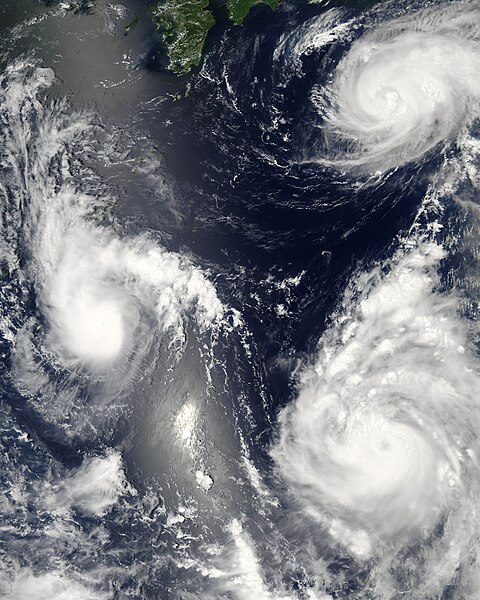Fayl:Maria, Bopha and Saomai 2006-08-07 0435Z.jpg

Size of this preview: 480 × 600 pixels. Başqa çözüm: 192 × 240 pixels | 384 × 480 pixels | 614 × 768 pixels | 819 × 1.024 pixels | 1.638 × 2.048 pixels | 7.200 × 9.000 pixels.
Kerçek fayl (7.200 × 9.000 piksel, fayl büyükligi: 7,6 MB, MIME çeşiti: image/jpeg)
Faylnıñ keçmişi
Faylnıñ kerekli anki alını körmek içün tarihqa/saatqa basıñız.
| Tarih ve saat | Kiçik resim | En × boy | Qullanıcı | İzaat | |
|---|---|---|---|---|---|
| şimdiki | 03:06, 2006 s. avgustnıñ 8 |  | 7.200 × 9.000 (7,6 MB) | Good kitty | == Summary == {{Information |Description=Three different typhoons were spinning over the western Pacific Ocean on August 7, 2006, when the Moderate Resolution Imaging Spectroradiometer (MODIS) on NASA’s Aqua satellite acquired this image. The strongest |
Fayl qullanıluvı
Bu saife qullana bu fayldı:
Umumiy fayl qullanıluvı
Bu vikilerde bu fayldı qullana:
- ar.wikipedia.org qullanım
- az.wikipedia.org qullanım
- bg.wikipedia.org qullanım
- bh.wikipedia.org qullanım
- cs.wikipedia.org qullanım
- de.wikipedia.org qullanım
- en.wikipedia.org qullanım
- Typhoon
- Typhoon Saomai
- Tropical cyclone
- Wikipedia:Picture peer review/Archives/Archive2006
- User:Plasticup/MyFavorites
- Typhoon Maria (2006)
- User talk:Hurricanehink/Archive 23
- User talk:Thegreatdr/2012archive
- Wikipedia:Wikipedia Signpost/2013-11-20/Traffic report
- Wikipedia:Wikipedia Signpost/Single/2013-11-20
- Wikipedia:Top 25 Report/November 10 to 16, 2013
- User:Tfmbty/2006 Pacific typhoon season
- User:SongdaTalas/Archives of Former Articles
- en.wiktionary.org qullanım
- es.wikipedia.org qullanım
- fi.wikipedia.org qullanım
- hi.wikipedia.org qullanım
- id.wiktionary.org qullanım
- incubator.wikimedia.org qullanım
- ja.wikipedia.org qullanım
- ja.wikibooks.org qullanım
- ko.wikipedia.org qullanım
- lo.wikipedia.org qullanım
- ms.wikipedia.org qullanım
- my.wikipedia.org qullanım
- nn.wikipedia.org qullanım
- no.wikipedia.org qullanım
- pt.wikipedia.org qullanım
- ro.wikipedia.org qullanım
- ru.wikipedia.org qullanım
- szy.wikipedia.org qullanım
- th.wikipedia.org qullanım
- tk.wikipedia.org qullanım
- tr.wikipedia.org qullanım
View more global usage of this file.





